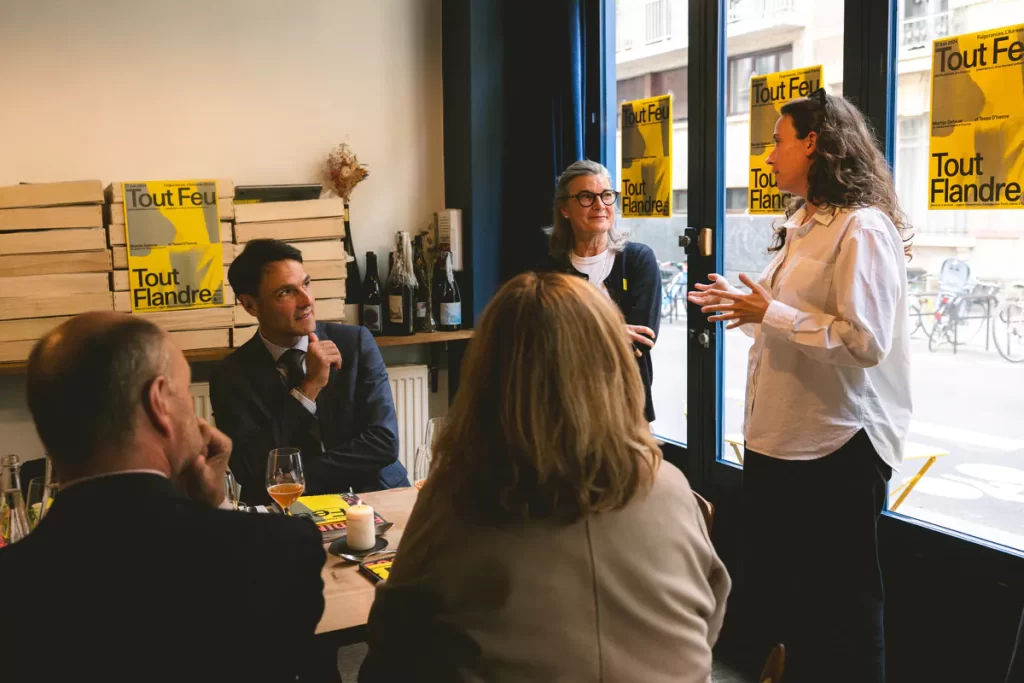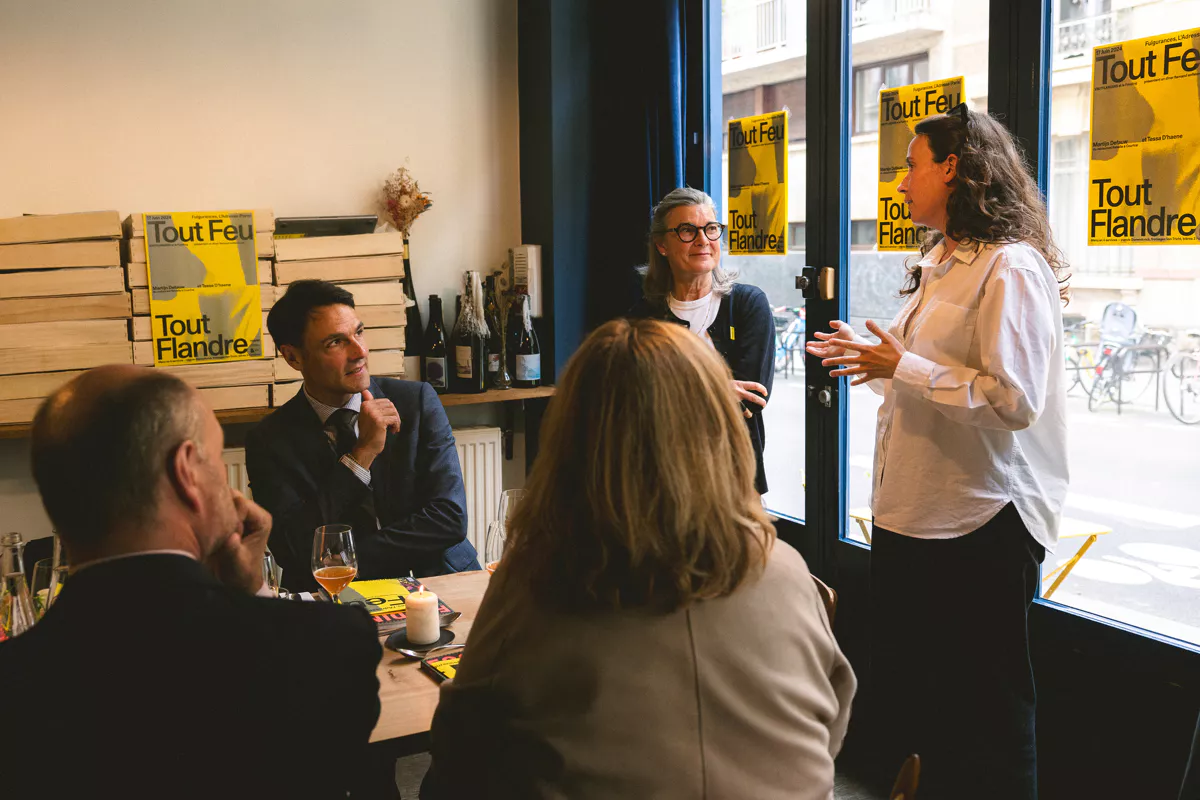Le Fooding 2024 At the table with Christine Doublet!
Last November, the Fooding Guide unveiled its highly anticipated rankings. We discover a slight ” taste of come back” for the cuisine of our country ancestors, revisited with talent by farm restaurants located in Manche or Perche. While waiting to devour this guide with appetite, we asked Christine Doublet, who passionately oversees Fooding, for her insight.

What are this year’s winners? Is Paris the capital of food?
There aren’t many Parisians, like last year, which was a somewhat unusual post-COVID ranking: there were only two winners out of ten in the metropolis, and this year, out of fifteen addresses, only four are Parisian. What is important to clarify when we talk about food rankings is that it doesn’t tick any boxes, with no obligation for the chefs. The rankings are made with them. However, among the major trends that we are seeing – and which concern the best restaurant rewarded – is the departure from Paris of three chefs – stars of bistronomy – who have set up in different parts of France: James Edward Henry and Shaun Kelly with the restaurant Le Doyenné, in Saint-Vrain, Edward Delling-Williams with The Presbytere in Manche, and finally Sven and Marianne Chartier who opened ” Oiseau oiseau ” in Perche at the end of October. And these three addresses are not at all similar but are creating new ecosystems around them.
How can we define this new “neo-rural” trend?
For these three chefs, these are projects that connect the personal and the professional because they are family projects. For example, at ” Oiseau Oiseau “, Sven works with his wife Marianne and his brother Niels who takes care of the cellar, the wine, and the service. Edward for his part moved with his whole family but also the whole team to the Channel. They are also opening a brasserie and a cabin on the seafront. They are also building their vegetable garden… In short, they are investing in the local community that they are boosting by creating special places. For James and Shaun, their project started five years ago with the purchase of a property that they restored during the Covid years. They are also almost self-sufficient in the production of vegetables and fruits but also meat, with the breeding of pigs and poultry. They also supply quite a few restaurants in Paris with their products.
Can we say that food has contributed to breaking the codes of academic cuisine and has allowed us to talk about bistronomy?
Among the twelve other addresses selected, you will have very different concepts. Whether it is street food in Perpignan, small neighborhood addresses in Marseille, or more refined ones on the seafront in Brittany, the list of winners is very varied. This does not reflect the absence of a guiding principle but rather our desire to highlight and support what seems to embody the taste of the time. Our articles and our list of winners support any approach that may seem good or interesting. We talk about what is happening today in the kitchen. We are open to everything, as well as to new things that we did not even know.
How does the food guide organization work?
We have our editorial team of journalists, but also 60 columnists who travel around France all year round for the guide. The way it works is to retest all the addresses that were in the paper guide from the previous year. The print only publishes new items or new entrants, but on the website, there is an exhaustive list of our addresses: restaurants, bars, rooms, shops, and wine cellars. And finally, we test new items. For example, out of 1,500 addresses in all categories, 30% are new and 25% will not be renewed from one year to the next, this is for many reasons such as the closure of addresses, the departure of chefs, or fewer convincing experiences than the previous year. The guide is a very big project that takes up nine months of our year.
What is the common denominator between your columnists?
The common denominator between profiles as different as retired doctors, art teachers, or journalism students is their love of food and gastronomy. We talk about columns and not food critics because the only criterion for an address to be included in the guide is to want to go back: that’s our guiding principle. Their columns must be able to talk about what we eat, the menu, and the drinks with a style that can be very precise, but they don’t give negative opinions. Otherwise, it means that it shouldn’t be kept in the guide. And it’s true that in theory, we believe that you don’t have to be a professional for that but passionate.
If you had to summarize your guiding principle?
The DNA of Fooding, when we talk about criticism or judgment, is this notion of pleasure that we must not lose sight of when we go to a restaurant, but also the investment of the people who welcome you there: it doesn’t matter whether he or she is invested in making you a smash burger or an eight-step tasting menu. The list of winners must reflect a concentration of all of this, generally with a recommendation by several columnists but also by people from the editorial staff: we will then test it to confirm this impression.
How to renew yourself and avoid living on your laurels?
In our projects that were launched during the year, we have just launched our new site with more interactive content, but also since September a paid newsletter “Saucisse” which is aimed at a very loyal community looking for a maximum of content such as recipes or mini travel guides… And then we organize events all year round which can sometimes accommodate up to 600 people. We also launched our first podcast in the form of episodes recorded live during the event which is sponsored by San Pellegrino, our partner for over 20 years. The last episode was sponsored by Veuve Clicquot with whom we work on issues of promoting women in gastronomy. We have had a partnership with them for 3 years through the production of a series called “Cheffe de Bande” which tells the story of all those who work in the kitchen such as female chefs but also sommeliers, mixologists, cookbook editors, and journal lists.
What is the economic model of food?
We operate as an agency, producing both our content and content and events for brands that we need to support. For example, the “gang leader” project was close to our hearts. We need to create honest, sincere, and independent content to ensure its quality and interest our readership while meeting the needs of the brands.
With Fooding, can we talk about a culinary movement similar to the great artistic movements of the beginning of the century?
There was an article about ten years ago in the New Yorker that said that food was to gastronomy what the New Wave was to cinema. What is obvious is that art, cinema, and music are all sources of food inspiration. Starting with the cover of our guide made by a young painter named Maïté Grandjouan, but also dozens of artists to illustrate the list of winners.

